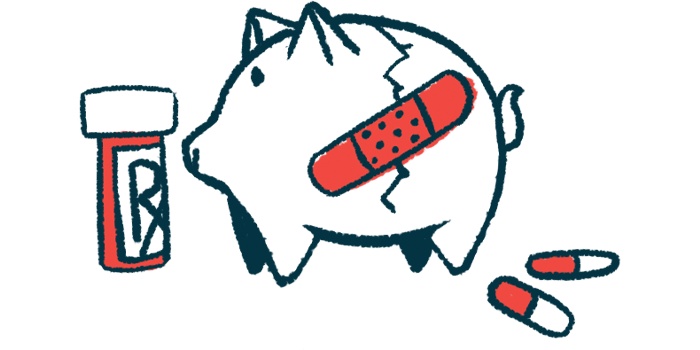Medical costs of MG 4X higher than for general population: Study
Sources of higher costs included medical expenses, treatment, ongoing care

The direct costs of myasthenia gravis (MG) are about four times higher than for the general population and even higher when disease symptoms worsen during an exacerbation, according to a study from Italy.
The study, “Real world study on prevalence, treatment and economic burden of myasthenia gravis in Italy,” was published in Heliyon by researchers on behalf of a group of local health units in the country.
MG is a chronic disease that occurs when self-reactive antibodies disrupt the normal communication between nerve cells and muscles, leading to its hallmark symptoms of muscle weakness and fatigue.
The disease’s costs can arise from various sources, including medical expenses, treatment, and ongoing care. They can vary depending on factors like geographical location, healthcare, insurance coverage, and symptom severity, however.
To get an idea about these costs in Italy, researchers searched a database of more than 12 million people for adults with an MG diagnosis, an active disease exemption code, or who had one or more prescriptions for pyridostigmine, an approved MG medication sold under the brand name Mestinon.
They identified 4,397 patients (2,350 women; 2,047 men), which translated into a prevalence of 29.3 cases per 100,000 people. The prevalence, which refers to the proportion of a population with the disease at a given time, was higher in women (31 vs. 27.6 cases per 100,000 people) than men.
Based on these data, researchers projected the total number of patients with the disease in Italy to be 17,728 (9,618 women; 8,110 men) in 2018.
Expenses, treatments, care driving higher MG medical costs
When prescriptions for pyridostigmine were used as the sole criterion, the prevalence was lower, at 13.5 cases per 100,000 and the total number of patients in Italy was projected at 8,190 (4,456 women; 3,734 men).
Most (84%) patients used pyridostigmine in the first year of the study’s follow-up period, but the proportion dropped to almost half (46.8%) by the third year. Corticosteroids were used by about half (54.5% in the first year and 44.6% in the third year) of the patients.
Non-steroidal immunosuppressants, mainly azathioprine, were used by about 16% of patients. A smaller proportion (1-3%) used other treatments like plasmapheresis, also known as plasma exchange, and intravenous immunoglobulin.
Compared with the general population, a greater proportion of MG patients were given medications or admitted to the hospital for diseases other than MG.
When researchers compared the total yearly healthcare costs, they found the direct costs of MG were about four times higher than those of the general population, amounting to a mean of €3,771 (about $4,045) in the first year compared to €869 (about $932).
In the first year, MG’s direct costs came mainly from hospitalizations (€2,198; about $2,358) and medications (€1,148; about $1,231). By the third year of follow-up, the costs of hospitalizations had dropped to €1,054 (about $1,130), whereas those of medications remained about the same (€1,122; about $1,203).
For patients who had an exacerbation, which occurs when symptoms worsen, the direct costs were even higher, reaching a mean of €7,827 (about $8,399) in the first year of follow-up.
Among 4,019 treated patients, most (78.6%) received pyridostigmine as first-line treatment and 3,114 (77.5%) switched to a second line of treatment after a mean of 8.8 months. The most frequent sequence was pyridostigmine followed by corticosteroids (67.2%).
Nearly a third (32.5%) switched to a third line of treatment after a mean 12.5 months. The most common combination was pyridostigmine followed by corticosteroids and non-steroidal immunosuppressants (33.6%). About one in five (20%) patients switched to a fourth line of treatment.
The total direct costs increased with later lines of treatment from a mean of €2,007 (about $2,153) to €7,019 (about $7,531) from the first to the fourth line of treatment. The increase came from both medications and outpatient services.
“These findings showed the epidemiologic burden of myasthenia gravis and the complexity of the therapeutic management for the affected patients, with large use of treatments and elevated healthcare expenditures,” the researchers wrote.







